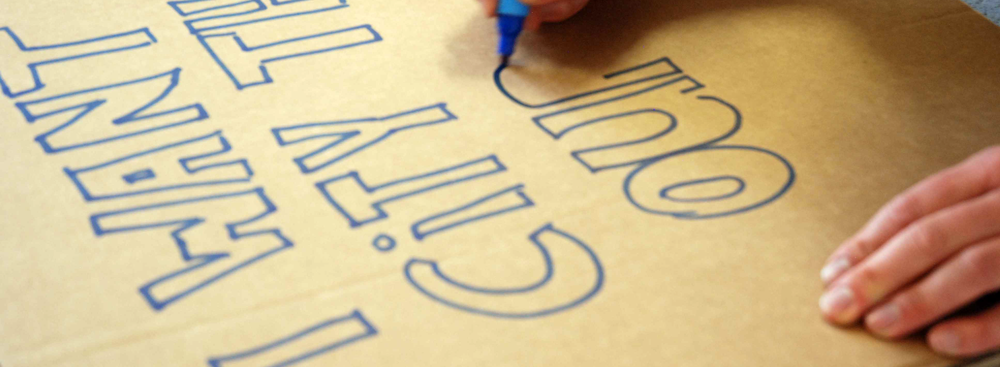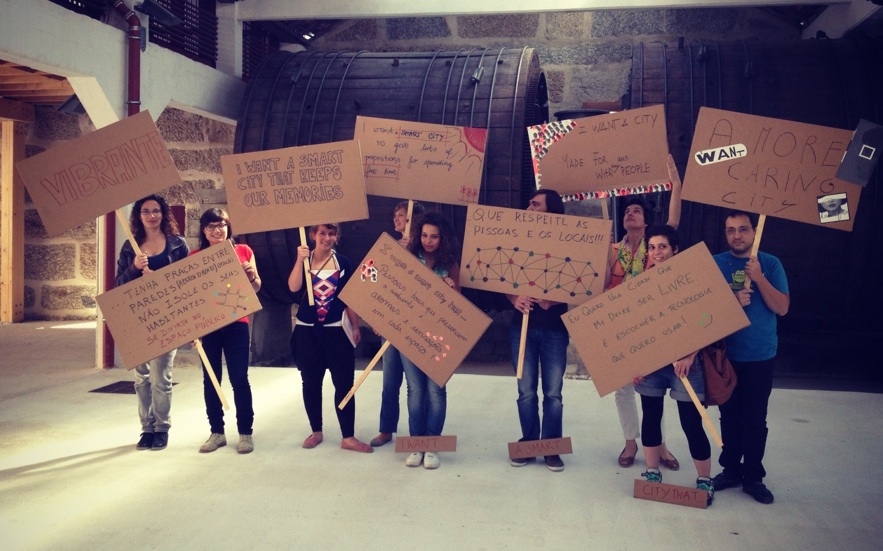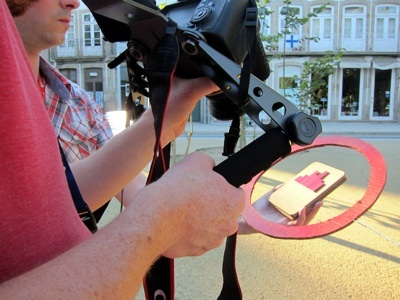
How smart is your Guimarães?
Last week I traveled to Guimarães to run a design fiction workshop as part of our Open Cities programme.
The workshop was inspired by a talk by Sam Kinsley of University of West of England on Design Fiction at the Pervasive Media Studio. ‘Design Fiction’ describes ways of using storytelling techniques, especially in the form of video, to make speculative design ideas feel real. Sam has explored how technology companies like Microsoft have used Design Fiction to show how we might use and interact with computers in the future. But the problem with these films is that they are all a bit Benetton advert – contrived images of affluent people living perfect lives. So we started wondering what an artist-led design fiction might look like? And what real people want from smart cities (especially when the city is full of history like Guimarães)?
The workshop, which took place in Guimarães’ amazing new Instituto de Design (Design Institute), kicked off with introductions to the team including Sam Kinsley, film maker Geoff Taylor, who led on the second bit of the commission (see end of blog) and cardboard artists Mo. Ca. Sam then gave his design fiction talk.
The workshop participants’ reaction to the films were unanimous – they found them cold and isolating. They wondered where the sense of community had gone and why all the buildings were new. A good and interesting start.
Next we introduced our ‘fridge poetry’ a set of prompts to get people exploring their own ‘smart city’ agendas:

Design Fiction Fridge Poetry
We started with the present day and asked them to get into 3 groups and pick a context and user group to frame a discussion about what they thought worked and didn’t work about that situation – i.e. how was traveling by bus as an experience for older people? We then moved on to the future scenarios and asked the groups to work with a word from each group and sketch out their own design fictions for Guimarães in the future.
- The groups were highly imaginative and didn’t need much encouragement to get on. As Guimarães is a place without many screens, adverts or CCTV, we were really interested to see what they would come up with. Would they want similar things to a more modern-designed city? How would they feel about privacy? Perhaps the lack of technology infrastructure would enable them to leap frog cities which have to have many large outdoor advertising screens etc and create something really novel?
The first group decided to act out the scenario they explored, which involved older people, younger people, visualization and play.
Their emotional park understood when an elderly visitor wasn’t well and raised the alarm to a passing security guard, whose smart goggles were able to identify the place where the person was in distress and raise the alarm. This team were most concerned that the technology wasn’t ‘tracking’ the person, and that it should simply nudge for assistance rather than raise the alarm itself. They wanted to use the technology to explore responsibility and caring and felt that a park was the perfect place to try this out.
The second group were exploring home, unemployed people, remembering and smell. They devised a smell based social network/archive that allowed people to keep and share special scents that could be used at a later date for comfort. They discussed how scent could be used to close distances (sharing the scent of a baby with its far away grand parents/sharing the smell of cooking to make someone come home from work).
The final group were trying to connect elderly people for well being and leisure. They created smart transport systems which could be summoned to the place of the older person, rather than a pre-specified bus stop. They explored ways to connect people’s interests so that older people could find like minded companions.
Again, they talked about connectedness, community and caring.
We finished the workshop with a call to arms, asking each of the participants to create their own banner about the kind of smart city that they would want:

"I want a smart city that..."
This Open Cities Commission came in two parts: first this workshop and then film maker Geoff Taylor and Sam stayed on to create their own design fiction film, shot in Guimarães using real people and scenes inspired by the workshop and props made by Mo. CA. More on this as it develops… The film, images from the workshop and the banners made will be shown at the Open Cidade conference in the Autumn.
(images from the workshop and some of the filming available on the Open City Flickr)

Smart City Filming
Clare Reddington


